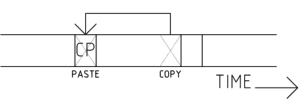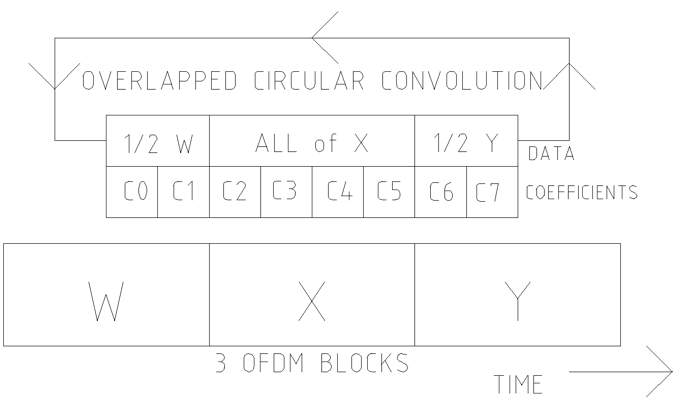Wireless
Getting Rid of a Big Communications Tax on OFDM Transmissions

You can find the background information for this article in the post "Sharing Bandwidth: Cyclic Prefix Elimination."
Most wireless transmissions use a modulation technology called OFDM (orthogonal frequency-division multiplexing). This method was invented by Saltzburg and Chen at Bell Labs in the 1960s, but was not widely commercialized until the 1990s when faster signal processing chips became available. This modulation method has now been adopted into DOCSIS 3.1 technology.
In essence, data symbols are formed into blocks comprised of a large number of cosine waves of differing magnitude and phase values. Because the waves all have an integer number of cycles in the block, they do not interfere with each other. That is, they have a mathematical property of orthogonality.
This modulation technique excels when there are a lot of reflections, a.k.a. multipath, echoes, or dispersion. For this modulation to be successful, a portion of the transmitted signal must be copied from the back and pasted onto the front of the transmitted block. This is illustrated in Figure 1. The copied and pasted signal is called a cyclic prefix (CP), or a cyclic extension, or sometimes a guard interval. The function of the CP is to allow any echoes to die out before the remainder of the block is analyzed.

Figure 1: A cyclic prefix (CP) is made by copying a part of the end of a block and pasting it onto the front, providing immunity from echoes
While this modulation technique works well, the CP is pure overhead, a waste of expensive scarce bandwidth, and depletes battery power on wireless transmitters. A CP is a communications tax on both bandwidth and battery power and CP overhead generally ranges between 5 and 25%.
CableLabs Invention
CableLabs has invented a method to get rid of the CP using a math trick called an “overlapped circular convolution” to remove the effect of echoes without the CP. Parts of neighboring preceding and subsequent blocks are used as “pseudo-prefixes.” After equalization, the neighboring blocks pieces are discarded, leaving a de-ghosted block. Essentially the pseudo-prefix is applied at the receiver, and the transmitter doesn’t need to send any CP. That also means that the duration of the pseudo-prefix can be arbitrarily increased at the receiver for severe echo environments.
Figure 2 is a block diagram illustrating the CableLabs method, where a pseudo-prefix is created at the receiver using neighboring blocks. For wide-bandwidth applications, the overlapped circular convolution can be replaced with an overlapped Fourier transform with frequency domain equalization. This is more computationally efficient. For a user, the implementation of this technology means the cell phone data rates go up when receiving, and battery life is longer when transmitting.

Figure 2: A “pseudo-prefix” for the X blocks is made with part of W block and part of the Y block. After equalization using an overlapped circular convolution, the partial blocks are discarded, leaving block X fully equalized. Next, the process is repeated to equalize the Y block.
Watch the video below to learn more about cyclic prefix elimination:

A technical paper describing the technique in detail is available in the December issue of the SCTE ISBE Journal of Network Operations on page 42 titled "OFDM Cyclic Prefix Elimination." You can download a copy for free once you register on the site. Subscribe to our blog or contact Principal Architect Tom Williams for more information

